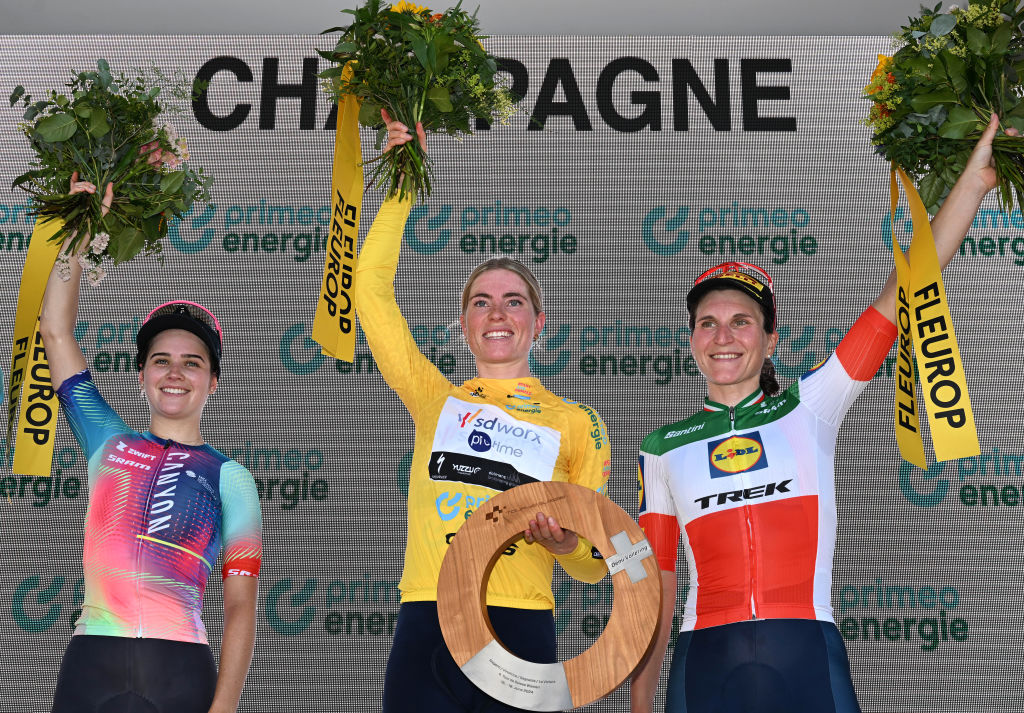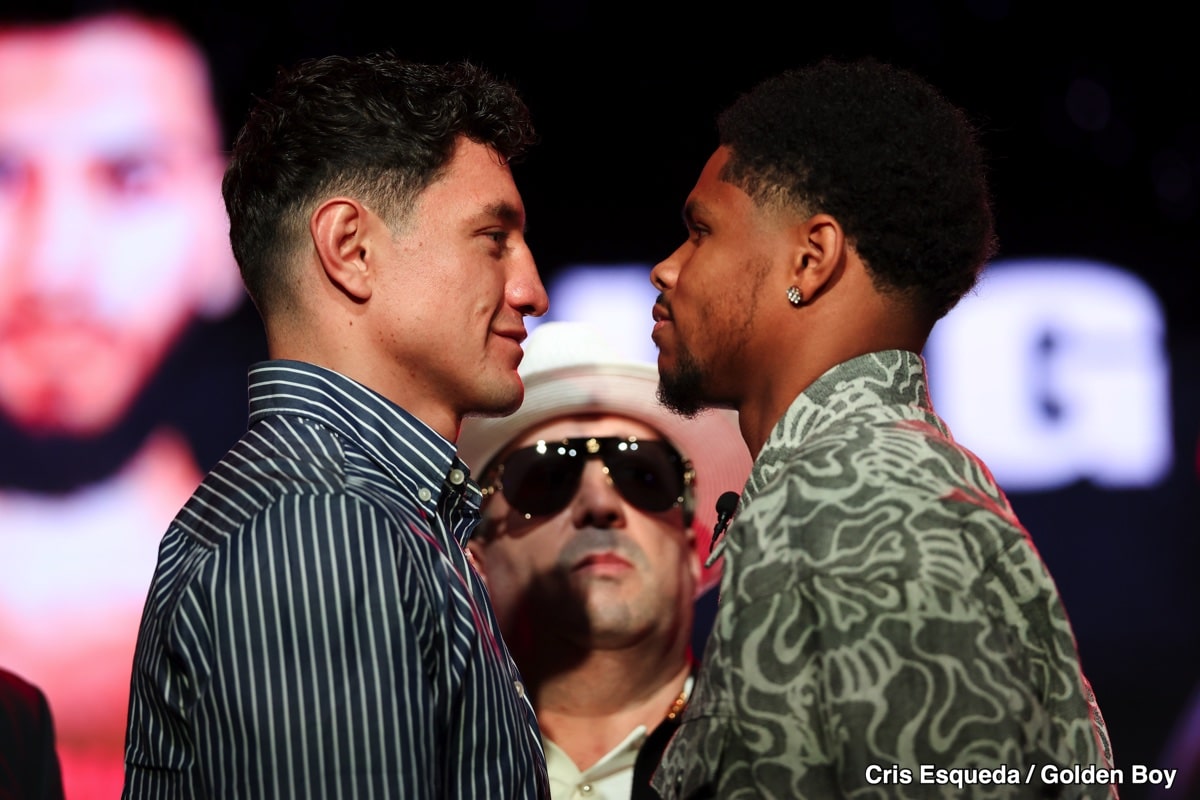There are two basic reasons for checking out the best cycling watches. Some people are general athletes and cycling is just one small piece of that. That covers those who are casual athletes and those who are more serious, but in both cases, there’s a greater range of needs. It’s important to be able to track a wide range of sports without needing specialised equipment.
For other readers, cycling is really the only sport they engage in. That still covers a wide range of experience levels but it’s a narrower focus. One of the best cycling computers gives a larger, easier to read screen, but many cycling watches offer the same functions, just in a smaller format. They can be useful for gravel rides, plus they’ll record data that a cycling computer can’t, such as heart rate unless you wear a separate heart rate monitor.
No matter which of those categories you fall into, modern cycling watches also handle smartwatch functions. You’ll be looking for varying levels of notifications and interaction with your phone plus sensor features that go beyond strictly performance metrics. Battery life might be something to consider as well as sleep tracking, apps, and menstrual tracking.
With all of these needs in mind, I’ve spent time with a variety of options and these are the products I’m recommending for a variety of users. My top pick is the Garmin Forerunner 970. It’s Garmin’s top running watch, but don’t let that put you off using it for cycling. It’s light, has long battery life and offers navigation and a full suite of cycling-related functionality and is cheaper than the Garmin Fenix 8 series multisport watches.
Quick list
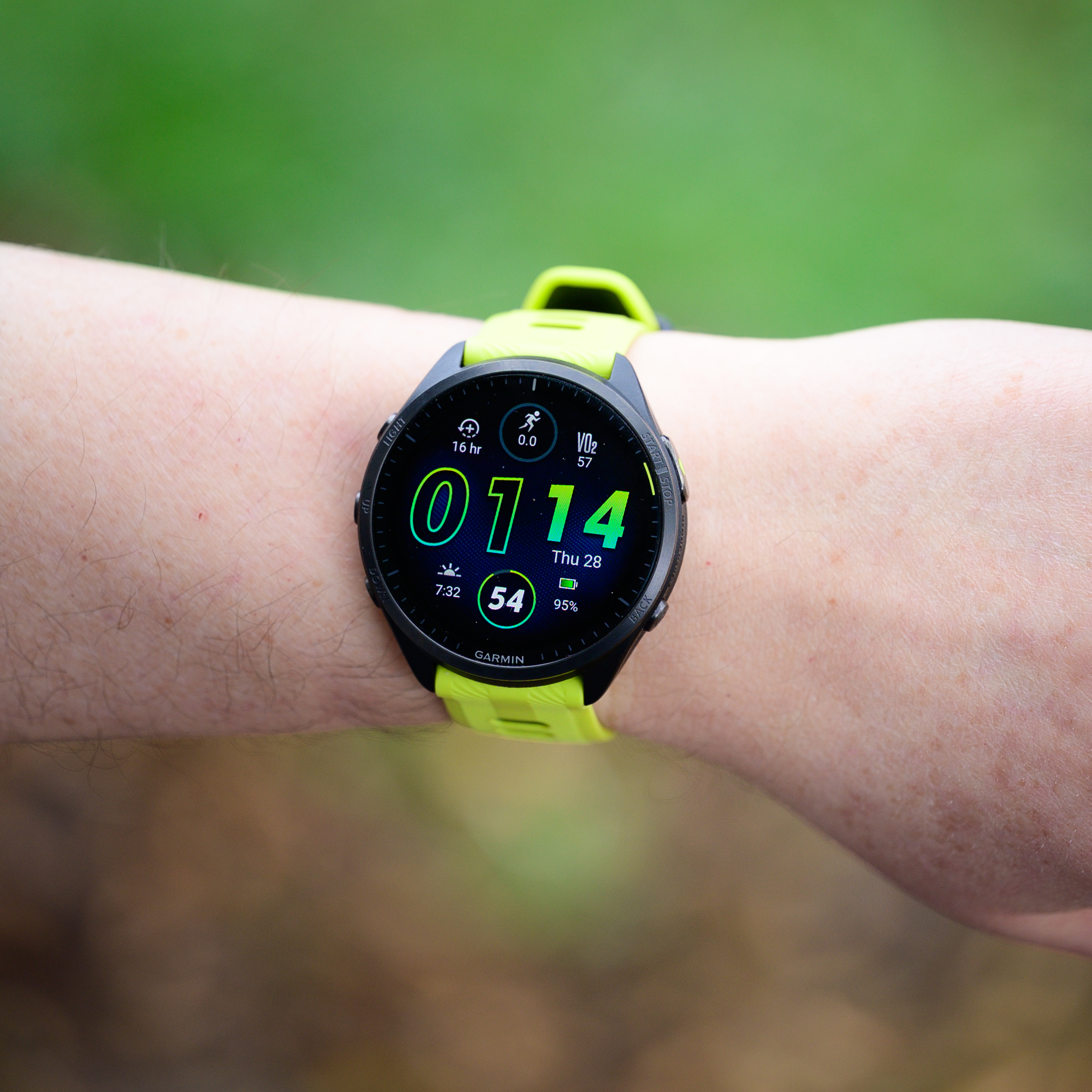
The Garmin Forerunner battery lasts for ages, there’s mapping, tracking for every kind of sport, and extensive help with making your training more effective including sometimes doing less.
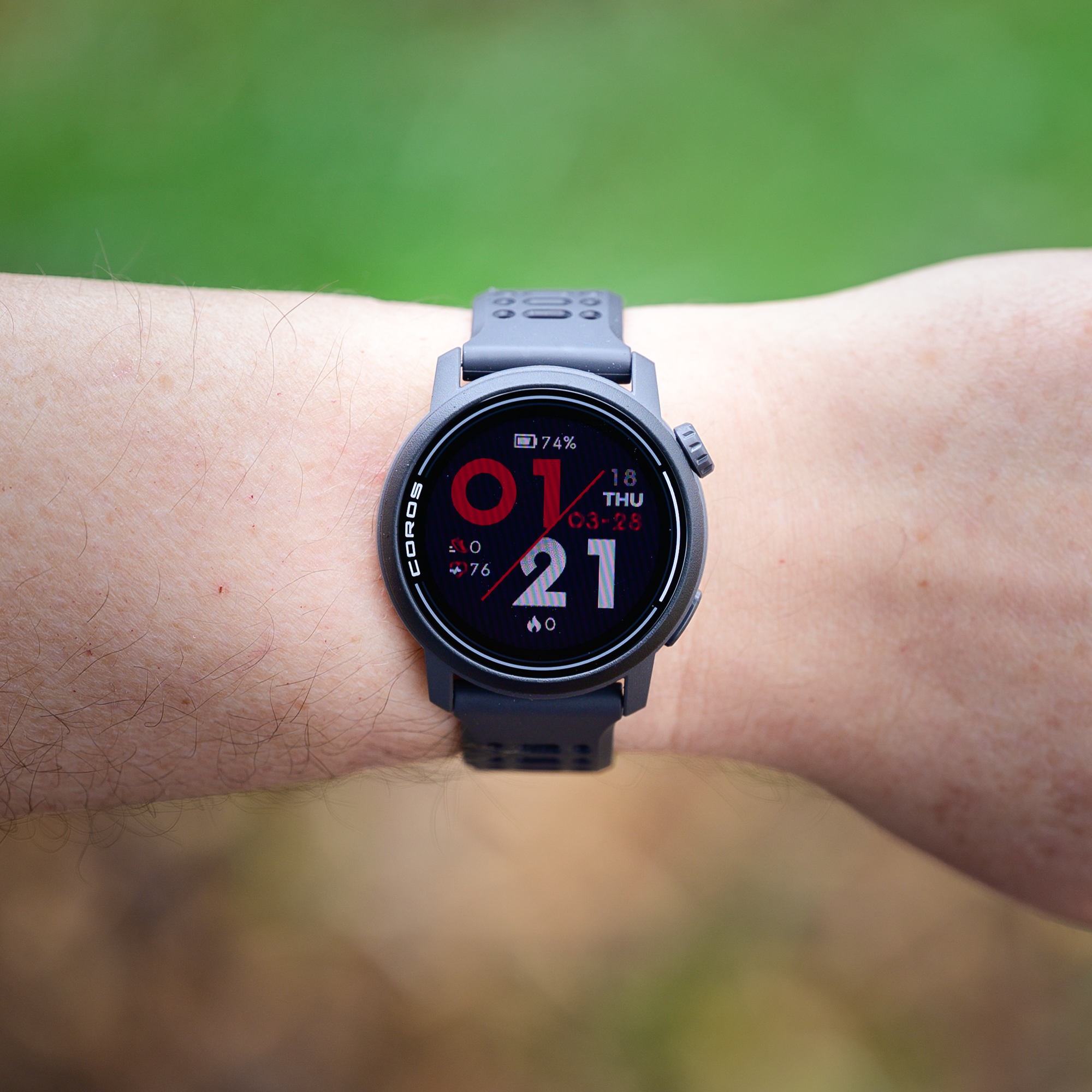
The Coros Pace 3 is a fitness tracker watch with tons of battery life and a lightweight body at a great price.

The Venu series leans more towards general use as a smartwatch but Garmin has far more battery life than Apple or Android options. If you want an option to straddle smartwatch and fitness needs while still going days without charging, the Garmin Venu 3 is for you.
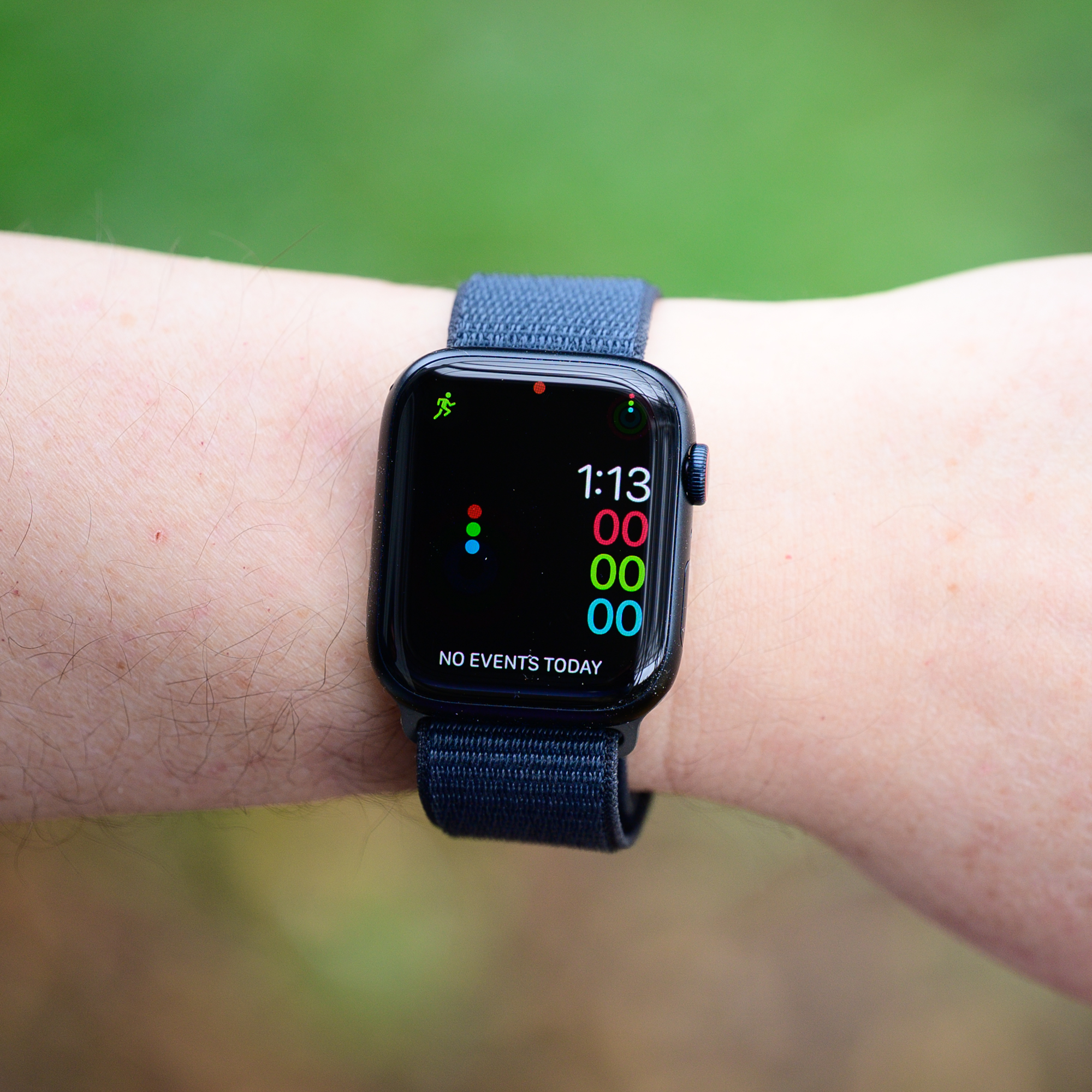
The Apple Watch is an obvious choice if you are already in the Apple ecosystem, but the Series 10 has enough battery to last more than a day, very serious cycling-specific features like FTP estimation, support for power meters, and the full smartwatch power of Apple Watch OS.
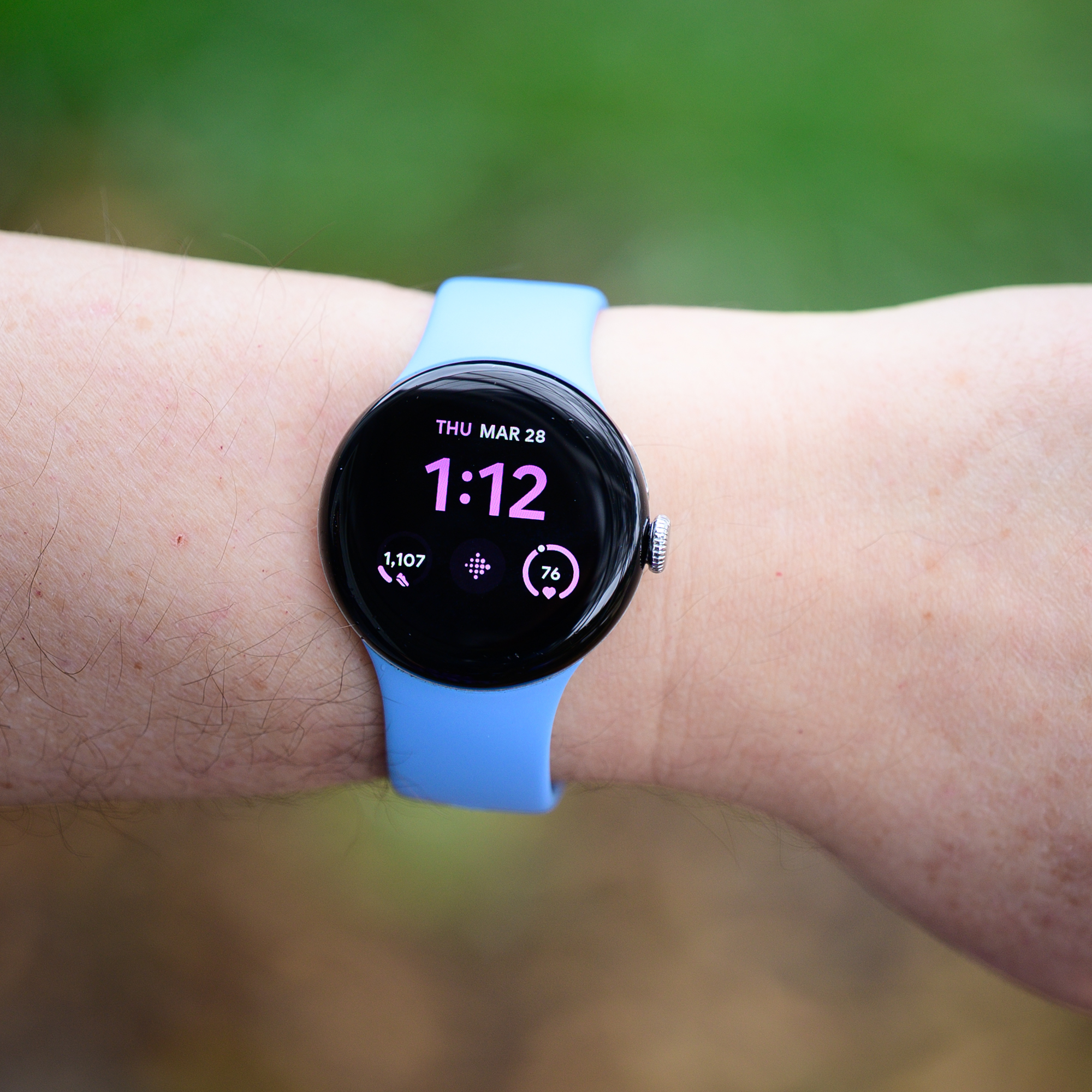
The Pixel Watch 3 is less cycling specific but if you want the kind of deep integration and software updates that Google offers with Pixel products then the Pixel Watch 3 offers those features plus light fitness and sleep tracking.
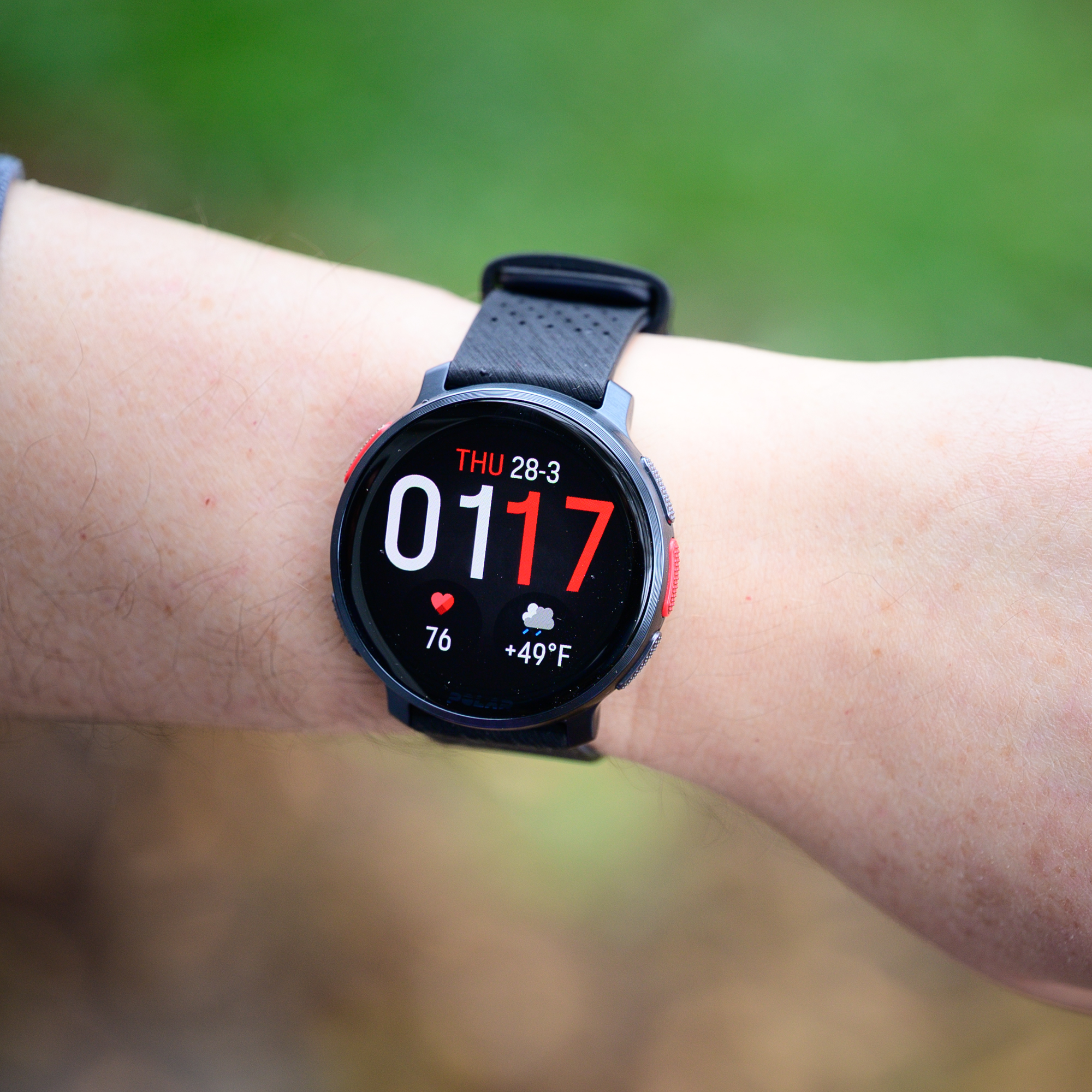
Garmin is a brand that offers a lot for those willing to invest in the ecosystem. Not everyone loves that approach though and Polar offers excellent self-coaching tools as well as the features you need for whatever sport you participate in.
The best cycling watches on the market today
Best all-around cycling watch
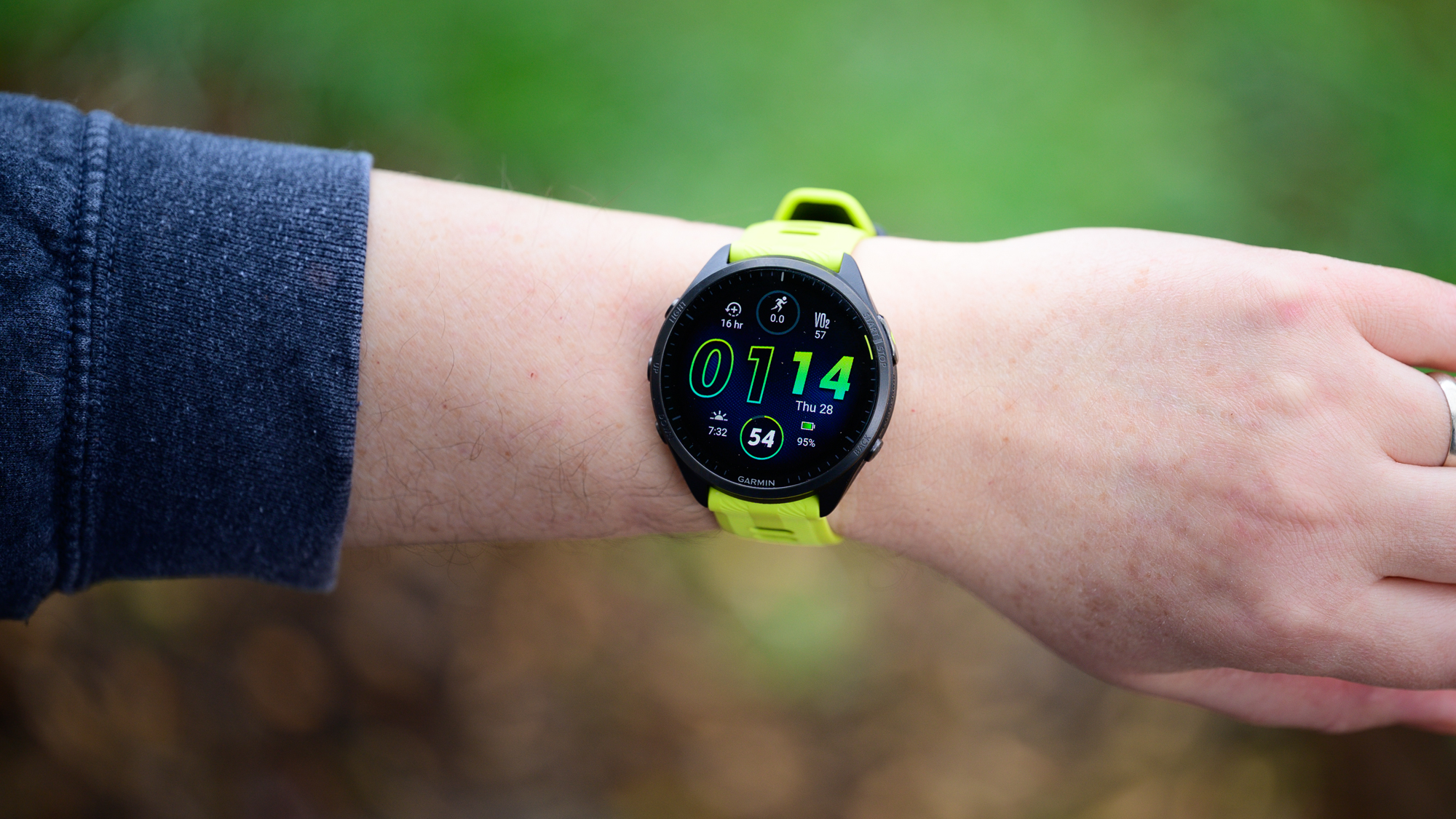
1. Garmin Forerunner 970
Best overall cycling watch
Specifications
Battery Life: Up to 15 days
Water Resistance: Swim, 5 ATM
Screen size: 454×454 pixels and 1.4”
Mapping: Yes
Power meter support: Yes
Control scheme: Buttons and touch screen
Menstrual tracking: Yes
Reasons to buy
Full mapping capabilities
+Speaker and mic
+Training status
+Morning report
+Power meter support
Reasons to avoid
Only one size
–Shorter battery life than its predecessor
Buy it if
✅ You want a full suite of cycling functionality: The Forerunner 970 packs in as much functionality as the best cycling computers.
✅ You want a full suite of analytics: Garmin Connect includes an abundance of training and health analysis.
Don’t buy it if
❌ You need a long battery life: The Forerunner 790’s battery life is shorter than some alternatives.
❌ You want a larger or smaller watch: While Fenix smartwatches offer three sizes, there’s just one for the Forerunner 790.
I almost didn’t look at the Garmin Forerunner when I started working on this list. As much as I love Garmin products, the Forerunner 970 has a range of features for running and swimming that I don’t need and might not make sense for someone looking to find the best cycling watch.
Triathletes will certainly appreciate that you can swim with it and features like running dynamics make sense for anyone who runs. It’s even got high-quality route following and mapping features plus power meter support so you could use it as your bike computer. That said, if you are a serious cyclist then one of the best bike computers plus the Garmin Venu 3 initially seems like a better match. That is until you start to understand the predictive features the 970 includes.
Quite simply the Garmin Forerunner 970 can transform your training through features like Training Readiness, Training Status, and the Morning Report. These are all connected features that come together to tell you not only how to train better but also when to take a break in your training and they’ve all been a huge help to me.
Every morning I wake up and the first thing I do is look at my morning report. It tells me how I slept and how that affected my recovery from the last training ride. Sometimes it will tell me that I’m training too hard and to take a break. Other times it suggests a specific workout and tells me to enjoy the day. I can also check at any time to see if the training I’m doing is sufficient to increase my fitness. These features combined have helped me do a better job varying my workouts and on days when I felt tired I’ve had a second voice telling me I’m not just lazy but really do need a break.
I still use a Garmin 1040 Solar and Garmin HRM-Pro Plus on the bike. Garmin does an amazing job of handing off between the various devices and all the training advice on the Forerunner 970 updates as if you never took it off.
Best budget cycling watch
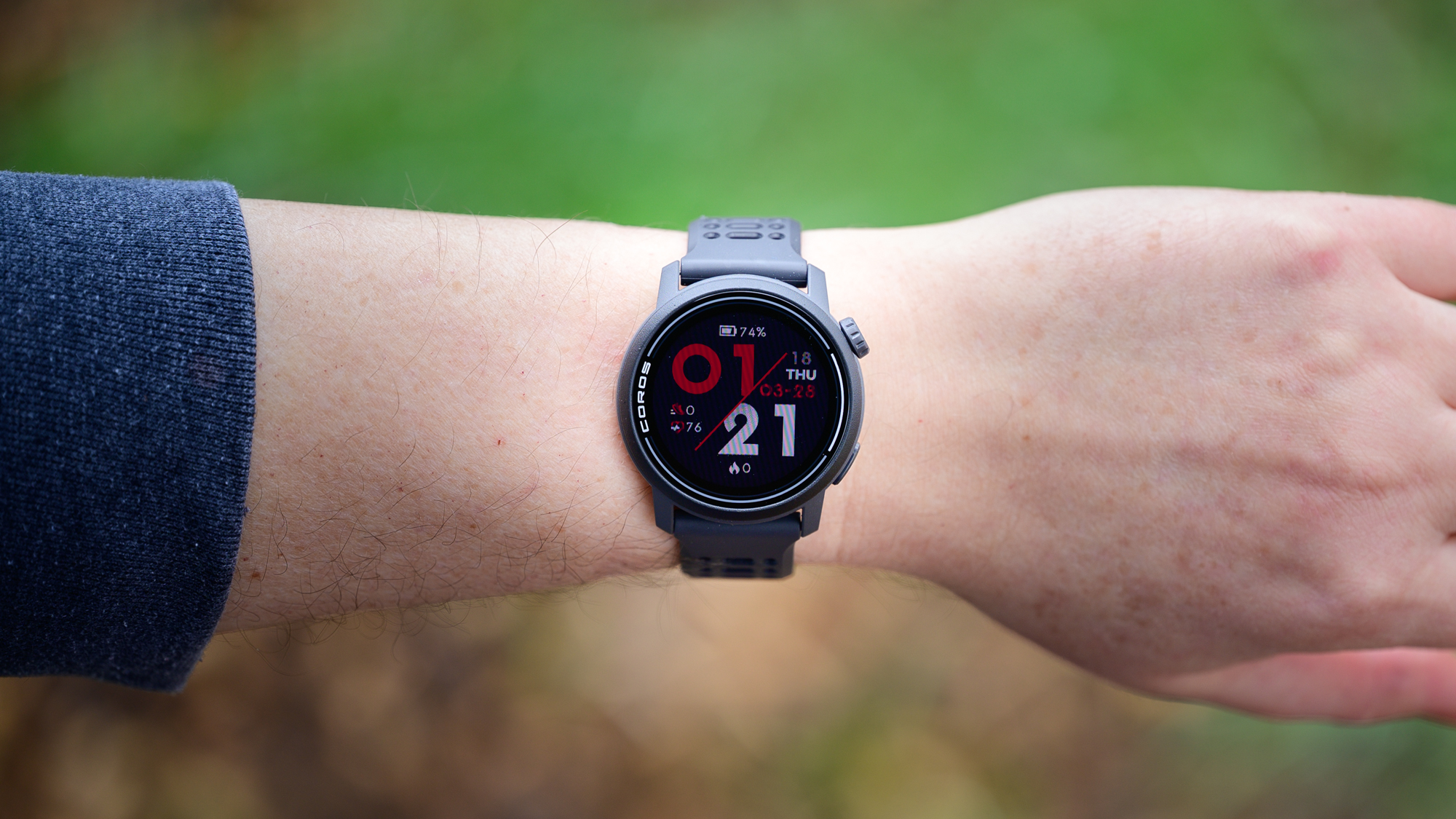
2. Coros Pace 3
Best budget cycling watch
Specifications
Battery Life: Up to 38 hours
Water Resistance: 5ATM
Screen size: 240×240 pixels (round)
Mapping: Yes
Power meter support: Yes
Control scheme: Buttons and touchscreen
Menstrual tracking: No
Reasons to buy
Long battery life
+Lightweight watch body
+Inexpensive
+Mapping included
+Plays music
Reasons to avoid
Limited smartwatch useability
–Dull and low-res screen
Buy it if
✅ You want long battery life: The 38 hours on offer are handy.
✅ You want a more budget option: The Pace 3 is relatively inexpensive for what it offers.
Don’t buy it if
❌ You want a bright screen: The flip side of the long battery life is an uninspiring screen experience.
❌ You want more smartwatch functionality: Coros’ is pretty basic.
The Coros Pace 3 is a little like the flip side of the coin from the TicWatch Pro 5. They both have long battery life and a budget price. The comparison isn’t perfect because the TicWatch is slightly more expensive, even with its perpetual sale, plus it has a much better screen. In either case though, you get a decent experience that’s a little less premium but very workable with a price to match. Where the two really split is TicWatch is the smartwatch’s first option while the Coros Pace 3 is the fitness watch first.
That means smartwatch functions are pretty sparse. There are some basic notifications, and it is possible to load music, but that’s about where it ends. On top of that, the screen isn’t great either. It’s pretty dull and while there’s colour it’s not what you would call vibrant.
The reason the Coros shows up here is that for not a lot of money, you get a nice lightweight watch body that supports power meters and mapping. There’s quality sleep tracking, you can track runs, swims, and rides casually or in a more serious way and you can report all that data back to whatever app works for you.
It’s also worth mentioning that while TicWatch is a reasonable comparison, so is Garmin. A big advantage of Coros is that the brand is always updating and adding features. TicWatch is terrible about that and while Garmin certainly has the resources, the brand tends to leave older products closer to how they were when purchased. You can see this happening right now if you take a look at the state of the navigation. Officially navigation on the Pace 3 is only breadcrumb however there is a current beta where turn-by-turn directions are evolving.
Best Garmin smartwatch for cycling
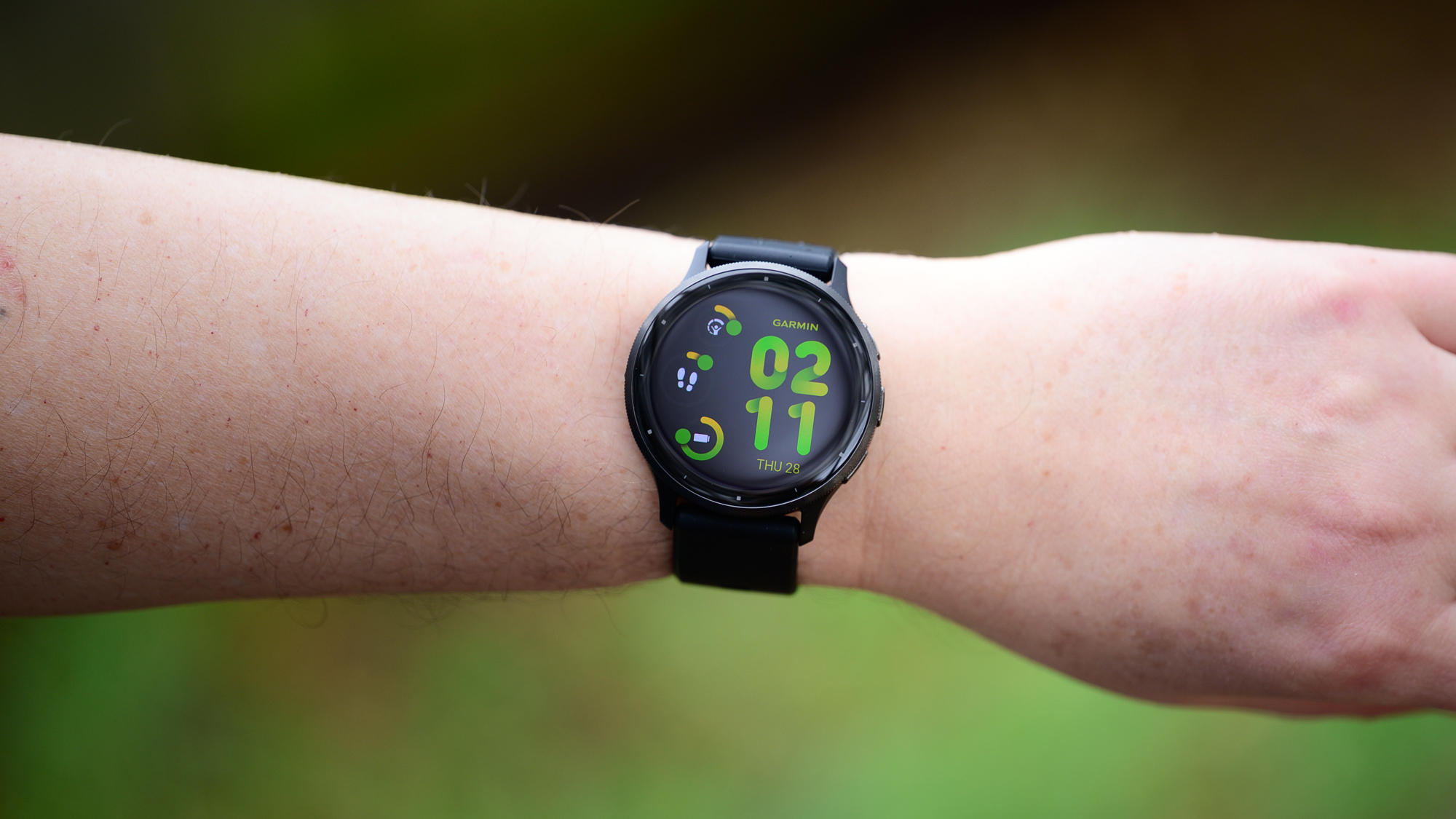
3. Garmin Venu 3
Best Garmin smartwatch for cycling
Specifications
Battery Life: Up to 14 days
Water Resistance: Swim, 5 ATM
Screen size: 454×454 pixels
Mapping: No
Power meter support: Yes
Control scheme: Buttons and touch screen
Menstrual tracking: Yes
Reasons to buy
EKG in select locations
+Built in speaker/mic
+Morning report
+Power meter support
+Smart trainer support
Reasons to avoid
Lacks training readiness and status
–No basemaps
Buy it if
✅ You want a cycling watch that works well off-bike too: The Venu 3 looks smart and works well for gym workouts and other activities.
✅ You want a smaller size option: The Venu S has the same functionality but in a smaller 41mm size.
Don’t buy it if
❌ You want mapping: There’s no base map, just a breadcrumb trail.
❌ You want training readiness tracking: Garmin omits some of its more advanced status training functionality.
I reviewed the Garmin Venu 2 Plus and absolutely loved it. It fits perfectly with my use case of riding with a bike computer. Then Garmin came out with the Venu 3 and added support for power meters and control of smart trainers making it a capable bike computer for a lot of people.
The Venu series, along with the Venu 3, is the Garmin range of products that balances smartwatch features with fitness features. There are two sizes and a wide range of colours combined with a dressed-up look that works equally well with button-down shirts and cycling jerseys. You can answer the phone on your watch if you are working out and when your hands are sweaty the dual control scheme is handy.
There’s no support for mapping or route following but, similar to Apple products, you’ve got a mid-range bike computer option or an excellent companion to a dedicated bike computer. Unlike Apple though, choosing Garmin will mean a seamless handoff with Garmin bike computers and enough battery life to leave the charger at home for short work trips.
The Venu 3 is so capable that the lack of predictive training features feels like an even bigger loss. Right or wrong, Garmin keeps the Forerunner and Venu product lines separate through choices as much as hardware. The Venu 3 will record your workouts both on and off the bike, track your heart rate variability, track your sleep, and there’s an EKG in some markets. You also get a morning report with useful info but overall you will need to use other products to take control of your own training. This might actually be a bonus to some cyclists so you’ll have to decide if those features are worth the extra cost of the Forerunner 970.
Best cycling watch for iPhone users

4. Apple Watch Series 10
Best cycling watch for iPhone users
Specifications
Battery Life: Up to 18 hours
Water Resistance: Swim, 5 ATM
Screen size: 496×416 pixels
Mapping: Yes (no route following)
Power meter support: Yes
Control scheme: Touch screen with a digital crown
Menstrual tracking: Yes
Reasons to buy
Live view on iPhone
+Siri support
+Full backing of Apple and the app store
+Custom workout support
+FTP estimation
Reasons to avoid
Lacks predictive training suggestions
–Short battery life
–Lacks route support
Buy it if
✅ You want tight iPhone connectivity: The Apple Watch is well-integrated with Apple’s other products.
✅ You want to pay from your watch: Apple Pay is more broadly supported by banks than Garmin Pay, particularly outside the US.
Don’t buy it if
❌ You want longer battery life: You’ll need to recharge the Apple Watch daily, even if you’re just using it without tracking activity.
❌ You want better training support: You don’t get training recommendations or full route planning support.
If you are starting to get serious about cycling, you might look at the price of a cycling computer and think it’s pretty ridiculous given how capable your phone is. If your phone is an Apple iPhone that’s even more true as Apple has invested significantly in providing a capable fitness ecosystem. If you also have an Apple Watch, or want one, then you’ll find you’ve already got a very capable bike computer with no additional purchase.
At the heart of it, that also means you’ve got the full backing of the Apple ecosystem. No brand of smartphone has the kind of app and third-party hardware support that Apple does. If someone makes an app, it’s for Apple first. If you can dream up a hardware accessory then it’s probably available for an Apple product. Anyone who takes contactless payments will take Apple Pay and you can leave your credit card at home when you ride. You get the idea: choosing one of the biggest companies in the world has its advantages.
Outside of that, Apple has a solid cycling solution. Connect your sensors, including power meters, to your Apple watch and you can record all of the metrics you expect with other bike computers. Apple will extract your FTP automatically, saving the need to do a test, and you can push workouts from sources such as TrainerRoad. Then from there, all of that data will mirror to your iPhone which you can mount on your bars. With no special hardware, you will have a bike computer with an unrivalled screen and all the same data you expect from other bike computers.
The limiting factors to this arrangement are the battery life, lack of routing features, and predictive training support. The Apple Watch Series 10 has a respectable battery life and you get the same experience with the Apple Watch SE and the Apple Watch Ultra allowing for price/performance options. If you want the full experience though, you’ll need to leave your phone screen on.
You also don’t get any support for routing or the kind of predictive training help Garmin offers. You might find a third-party solution but unlike a Garmin watch, it won’t be a core function. The system isn’t integrated in a way that makes it easy and you may eventually reach a point where you want more than what Apple offers.
Best cycling watch for Android users
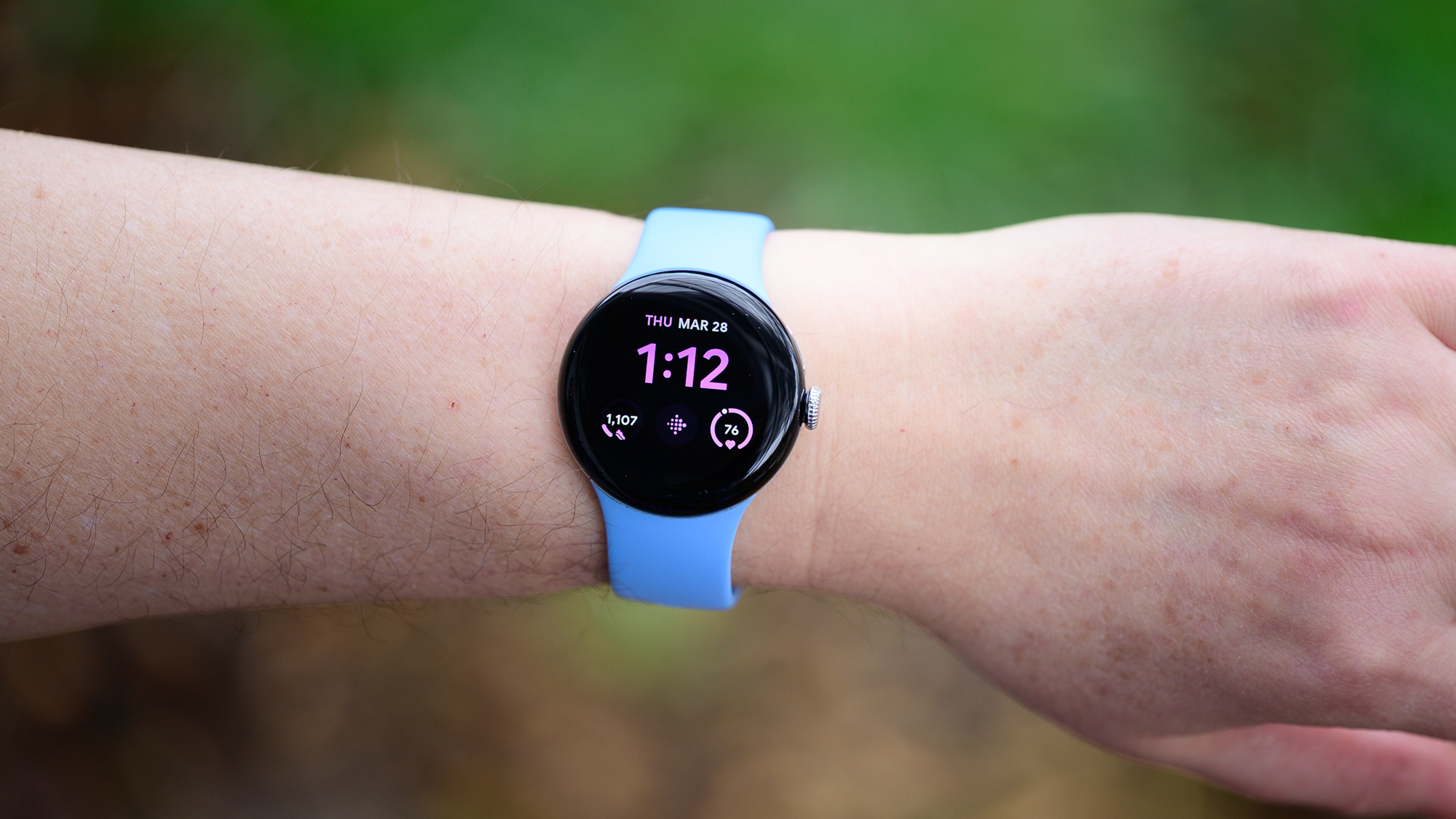
5. Google Pixel Watch 3
Best cycling watch for Android users
Specifications
Battery Life: Up to 24 hours
Water Resistance: 5 ATM
Screen size: 450×450 pixels (round)
Mapping: Yes (no route following)
Power meter support: No
Control scheme: Touch screen with a digital crown
Menstrual tracking: No
Reasons to buy
Low profile
+Excellent strap system
+Sleep tracking
+Automatic cycling detection
+Google pay support
Reasons to avoid
Lacks predictive training suggestions
–Short battery life
Buy it if
✅ You want tight Android connectivity: The Pixel Watch 3 integrates into Google’s ecosystem.
✅ You want a small device: The Pixel Watch is compact and won’t get in the way of your daily life.
Don’t buy it if
❌ You want more training functionality: Google majors on smartwatches rather than training functionality.
❌ You need longer battery life: You need to keep the Pixel Watch 3 charged each day.
Apple has really invested in trying to be a one size fits all fitness device. You’ll find support for power meters and FTP detection along with the ability to mirror screens. Google and the Pixel Watch 3 take things in an entirely different direction with a different consumer in mind. It’s actually worth mentioning that the two don’t directly compete as you’d need a matching phone and an entirely new ecosystem.
It’s true that the same drawbacks exist with the Pixel Watch 3 as you’ll find on the Apple Watch. There’s still no predictive training or route following built-in. You can download apps for both to fill some of the gaps though. In some ways that’s actually easier with the Pixel Watch 3 as there’s no attempt to turn the watch into a cycling computer. Without needing to keep that functionality you can use RideWithGPS or Strava to both record a ride and follow a route. There’s still no predictive training like a Garmin but that’s not the point.
What the Pixel Watch 3 focuses on is casual exercise and smartwatch features. Although you can change bands, I love the way the included band stays out of my way as I type on a keyboard. I actually love the low profile of the watch in general as, just like the band, it stays out of the way. When you start riding it will detect it automatically and ask if you want to record the ride and along the way, you can listen to music or pay for food without your wallet. When you get home the sleep tracking helps make sure you recover.
Yes, there is a ceiling for how much Google offers in terms of athletic performance tracking but if you are a bit more casual, and an Android user, the Pixel Watch 3 is a great companion to your phone. In my lif,e I use the Google Pixel 8 Pro when I head out on more serious training rides and the Pixel Watch 3 is amazing anytime I head out on a casual bike ride. The only drawback is that the battery is similar to the Apple Watch Series 10 and generally needs a few minutes on the charger every day.
Best Android cycling watch for battery life

6. Mobvoi Ticwatch Pro 5
The best android cycling watch for battery life
Specifications
Battery Life: Up to 80 hours
Water Resistance: 5 ATM
Screen size: 466×466 pixels (round)
Mapping: Yes (no route following)
Power meter support: No
Control scheme: Touch screen with a digital crown
Menstrual tracking: No
Reasons to buy
Sleep tracking
+Automatic cycling detection
+Long battery life
+Google pay support
Reasons to avoid
Lacks predictive training suggestions
–Slow to update wear OS
–Lacks Google Assistant
Buy it if
✅ You want long battery life: The Ticwatch does a lot better than Google for Android users.
✅ You want a budget Android smartwatch: Ticwatch’s pricing undercuts Google.
Don’t buy it if
❌ You want more training features: Serious cyclists will probably find the functionality lacking.
❌ You want the newest Android features: Ticwatch is slow to upgrade its OS version, so you’ll miss the newest functionality.
Again it makes sense to look at the Apple ecosystem and draw some comparisons. If you are in the Apple ecosystem then there’s only the Apple Watch and Apple offers three tiers. Pick your price and performance as you need. On the Android side of things, Google only offers the Pixel Watch 3 but there are other companies that fill in the gaps. One of those is Mobvoi and the Ticwatch lineup.
Ticwatch was one of the first Wear OS options out on the market and it’s only gotten better over time. The latest is the Ticwatch Pro 5 and, like before, it runs Android Wear OS so much of the experience is similar to the Pixel Watch 3. The big difference is that instead of a slim and smooth profile, TicWatch has gone big.
There’s no softness to the design from an aesthetic standpoint and the battery is big too. Matching the size of Garmin watches, the battery lasts up to 80 hours but it’s not only because of the size of the battery. Also helping reach those numbers is a second screen over the top of the primary screen. The secondary screen is an “ultralow-power display” that looks a bit like a throwback to the 80s but extends the battery life. There’s also a surprisingly fast charging system.
Outside of the different focus most, but not all, of the Ticwatch Pro 5 experience is like a Pixel Watch. Just as with a direct from Google watch, the focus is on more casual fitness and cycling. Ticwatch does add more fitness features but for the most part, they aren’t great. There’s a fitness app but you will probably want to download something instead. Ticwatch is notoriously slow with updating the Wear OS version so it’s behind the times and there’s no Google assistant but you do get NFC payment options and music.
Basically, if you want a smartwatch in the Android ecosystem that will track fitness, let you leave your wallet at home on casual rides, and doesn’t need charging every day then the TicWatch Pro 5 is a good choice. The price is also a bargain.
Best cycling watch for self-coaching

7. Polar Vantage V3
The best cycling watch for self-coaching
Specifications
Battery Life: Up to 43 hours in performance training mode (140 hr in eco mode)
Water Resistance: WR50
Screen size: 454×454 pixels (round)
Mapping: Yes
Power meter support: Yes
Control scheme: Buttons and touchscreen
Menstrual tracking: No
Reasons to buy
Long battery life
+Good tools for self coaching
+Aluminium body and highly textured buttons
+Polar Fuelwise smart carbs reminder
+Screen off still shows the time
Reasons to avoid
Lacks music playability
–Lacks NFC payment
–Lacks menstrual tracking
Buy it if
✅ You want an all-metal body: Polar’s all-aluminium body looks and feels smarter than Garmin-s part-composite design.
✅ You want self-coaching tools: Polar offers a good suite of training tools included.
Don’t buy it if
❌ You want smartwatch functionality: There’s no on-watch payment or music.
❌ You want menstrual cycle tracking: Although Polar measures your skin temperature, it doesn’t translate this into menstrual tracking.
The Polar Vantage V3 is a watch that comes back away from the smartwatch side. There are some expected smartwatch features like notifications but it’s not robust and it’s clear the idea is that you will have your phone with you. You can’t load music directly, although it is possible to control music via the watch, and you can’t pay for things with it. Mostly this is fine for me as I always have my phone with me anyway.
This setup means that the big competitor here is the Garmin Forerunner 970 even though Garmin has a few more of the smartwatch features. What Polar does have is a nicer aluminium body with big textured buttons as a companion to the touch screen.
The real difference between the Garmin 970 and the Polar Vantage v3 though is the approach to training and ecosystem. Garmin has a huge ecosystem and if you are willing to buy into it the brand will use all the data available to give incredible training direction. Polar instead records the data and then offers tools that make it easier for you to self-direct your training across a week and a season. When you actually use the Vantage v3 during a workout the FuelWise Smart carbs reminder helps remind you to eat based on energy used and, like Garmin, the battery life far outpaces smartwatch offerings.
The one thing I take issue with is the lack of menstrual tracking. Obviously not an issue I specifically run into but for those that care it seems like a very odd oversight. The Garmin menstrual tracker is something people love, and yet Polar tracks skin temp, so the hardware capability exists, but leaves it to users to interpret what that means. Perhaps this will turn out to be an advantage in some US states though.
How to choose the best cycling watch
When you survey the best cycling watch landscape, things are simultaneously sparse and not. I had more options on my list initially but the more I got into this investigation, the less it made sense to search far and wide. Instead, there’s a pretty distinct decision tree.
The first thing to consider is if you want a smartwatch that does some fitness tracking or a fitness tracker that has some smartwatch capabilities.
If you decide you want a fitness tracker that can handle cycling, as well as whatever you want to throw at it, then I’ve got Garmin or Polar. Garmin wants you to join the ecosystem and in exchange, you get some amazing training insight while Polar doesn’t have an ecosystem and is happy to help you train with the aid of a watch.
If you’d instead prefer a smartwatch that does some fitness tracking then it’s a choice of Apple of Android.
In either case, you get little more than a day of battery life and you are likely already locked into your choice. On the Android side, Google will sell you a fantastic smartwatch with very light fitness capabilities. On the Apple side, an Apple Watch is actually very capable and you can choose battery life and screen quality based on price without any degradation of the core experience.
Outside of those core decisions, I’ve got a few wildcards. Coros is a great budget fitness watch and the Garmin Venu series is a very impressive all-arounder. The TicWatch is also a budget choice but with a long battery life.
Best cycling watches: Frequently asked questions
How big should your watch be?
Even on the best cycling watches, the screen will be smaller than that of the best cycling computers. Many cycling watches have built-in navigation but, if you like to look at a map when riding, it can be difficult to see too far around you at a decent resolution. That means it’s a lot more difficult to read a map on a watch than a bike computer and the bigger the better. On the other hand, a larger screen means a larger watch, which can start to feel cumbersome. If you have a smaller wrist it may feel particularly awkward if you plan to sleep wearing your device.
This is usually fairly quick for most people to get used to but it’s worth paying attention to. Some watches are available in multiple sizes too so sometimes you have a decision to make.
What cycling (and other) modes are available?
Any capable cycling watch will handle cycling, indoor cycling, swimming, and running. Beyond that, it can depend. There are sometimes other sports categories but you might also want to pay attention to menstrual tracking and sleep tracking as those can affect your training. Heart rate variability is another feature that can help inform a watch about your general training status and many cycling watches now have electrocardiogram functionality. Basically, it’s easy to get core fitness tracking but what else can a watch do?
What types of sensor and wireless support is important?
The gold standard for cycling training is a power meter. The quality of data that a watch can provide tends to align with the ability to pair with a power meter. This holds true even if you don’t use a power meter as it tends to be a sign of a more serious approach to training.
Another differentiator is the ability to pick up a signal from the GLONASS, BaiDou and Galileo satellite networks, not just the US GPS. Whether or not you should enable these features depends mostly on where you are in the world. For the most part, we’ve found GPS is more than sufficient — enabling these additional satellite connections also puts a tax on the battery life.
Bluetooth has become the standard connection protocol. While it was once common to see sensors such as power meters, and turbo trainers, using only ANT+ that is largely gone. Even Garmin, which owns the ANT+ protocol, supports Bluetooth these days. As such, it’s less and less common to see ANT+ support on a (non-Garmin) watch but it’s not an issue anymore. It is still nice when a watch has its own Wi-Fi though as that tends to make life easier in a variety of ways you don’t think about.
Also nice are features like NFC for on-the-go-payments, the ability to load music, and even built-in cellular. These kinds of features let you leave your phone at home if you want.

How do we test the best cycling watches?
I’ve got a pile of candidates for the best cycling watches and I spent weeks trading them out. I went on indoor and outdoor rides, I connected them to sensors, I installed the apps, and I tested how they did with sleep tracking.
Some of them I passed around to others to get a second opinion from those who worked out a bit less. In the end, I fell in love with the top-spec Garmin Forerunner but I’ve provided a wide range of options and price points to match a wide range of needs.
You can read more on our review methodology on our How We Test page.



